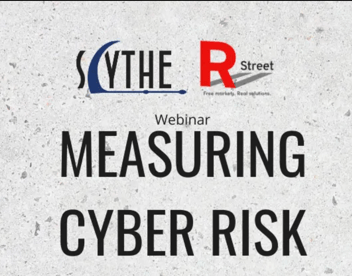
SCYTHE: 2024 Cyber Impact Makers
Cyber threats in 2024 are escalating in frequency and sophistication, challenging traditional security paradigms.
Marc Brown
Cyber threats in 2024 are escalating in frequency and sophistication, challenging traditional security paradigms.
This article aims to untangle the top 5 cybersecurity trends we see and hear from our clients. It offers insights into how new approaches and technologies align with organizations looking to strengthen their cyber defenses.
Offensive vs. Defensive Cyber Security
The dichotomy between offensive and defensive security strategies has become increasingly apparent. Regardless of what side you are on, red or blue, looking at any report (industry/market, technology, or regional), teams will continue to be at risk without more offensive investment. Security teams must adopt and integrate proactive security techniques into their defensive measures to enhance their security posture.
Traditional security strategies have predominantly focused on fortifying defenses and safeguarding against known vulnerabilities, often centering on Common Vulnerabilities and Exposures (CVEs) and Indicators of Compromise (IOCs). While these are essential, a paradigm shift is necessary to slow and stop adversaries who continue to operate and successfully carry out their missions.
Offensive security, often associated with breach and attack simulation (BAS) and penetration testing, plays a crucial role in this paradigm shift. Unfortunately, both BAS and pen testing will continue to come up short. Their promise is appealing: helping teams quickly scan endpoints for vulnerabilities in the case of pen testing and verifying TTP coverage for BAS. In reality, both provide compliance but do little to drive actionable improvements in security.
Adversarial emulation and BAS+, on the other hand, allow organizations to adopt a proactive stance by emulating real-world attacks and testing detection capabilities. By mimicking adversarial behavior, a combination of TTPs, and associated context, security teams can identify, assess, and mitigate exposures before malicious actors exploit them and complete their mission.
Detecting adversarial behavior is not enough on its own. Security teams should be equipped to isolate and contain threats swiftly, preventing further damage and lateral movement within the network. By combining offensive security techniques with robust detection engineering, organizations can significantly lower their overall risk profile and benefit from:
- Reduced risk. The safest organizations constantly perform experiments to see just how safe they are or aren't.
- Fact-based budget allocation. By highlighting where your defenses are weakest, adversarial testing helps you pinpoint where to best spend your money — whether it's on new technologies, more staff, or more training.
- Improved skills. Adversarial testing provides unequaled hands-on training — because your team gets to deal with real-life attacks in your real-life environment.
- Smarter technology decisions. No pre-purchase technology evaluation can match a post-purchase evaluation in production. Only adversarial testing can reveal if your vendors' claims hold water.
- Mitigation of regulatory consequences. Regulators are much less likely to impose heavy fines, code-of-conduct requirements, and/or other penalties if adversarial testing has been part of your due diligence.
Recommendation | Adopt Adversarial Detection Engineering: We strongly advise security teams to prioritize Adversarial Detection Engineering as a core element of their cybersecurity strategy. This approach empowers organizations to swiftly detect, analyze, and respond to malicious activities, even when dealing with unknown CVEs or IOCs. Leveraging BAS+ platforms, teams can efficiently simulate adversary behavior, allowing them to fine-tune their defense mechanisms, provide comprehensive staff training to address policy and process shortcomings, and more effectively safeguard their digital assets. This proactive stance is pivotal in maintaining a robust security posture in an ever-evolving threat landscape.
Generative AI, large language models and ML
The potential impact of Generative AI on the cybersecurity landscape is vast and transformative. Much like its ability to learn and replicate patterns in text, Generative AI can harness patterns from cyber threats, CTI, and mitigation frameworks. This proficiency empowers analysts to query CTI, analyze TTPs, and propose detections swiftly. A well-trained model on extensive historical cybersecurity data can discern patterns and trends, enabling the prediction of future threats. Instead of reacting to threats as they arise, cybersecurity professionals can harness machine learning to proactively mitigate threats before they materialize, optimizing the utility of their existing security tools.
In essence, Generative AI empowers enterprises to adopt a proactive stance in cybersecurity, addressing many of the challenges faced by cybersecurity professionals today, including:
- Efficiency: Generative AI enhances the efficiency of cyber threat detection and response. As an AI-native system learns to execute specific tasks, it assists security analysts in quickly accessing essential information for informed decision-making. This streamlines analyst workflows, allowing them to allocate more time to other tasks, ultimately boosting team productivity.
- In-depth Analysis and Summarization: Generative AI empowers teams to perform in-depth data analysis from diverse sources or modules, expediting traditionally time-consuming and meticulous data assessments with precision. Moreover, it can create natural-language summaries of incidents and threat assessments, further expediting and amplifying team productivity.
- Proactive Threat Detection: Perhaps the most significant advantage of Generative AI is the shift from a reactive to a proactive cybersecurity approach. Generative AI enables preemptive actions before a breach can carry out its mission by alerting teams to potential threats based on learned patterns and adversarial behavior.
Recommendation | Evaluate and Invest in Prompt Engineering: To unlock the full potential of AI, organizations must prioritize AI prompt engineering as a strategic initiative. With the increasing integration of ML-powered tools, crafting tailored prompts becomes essential to extract maximum value from large language models. By investing in prompt engineering, your SOC and IR analysts can efficiently retrieve precise information from AI models, enhancing the quality of AI-generated insights and boosting overall productivity. This proactive approach ensures AI applications are more valuable and effective and enables organizations to harness AI's capabilities to the fullest extent, all while effectively managing potential risks associated with AI-driven decision-making processes.
Security Awareness Training & Continuous Improvement
This year reaffirmed a fundamental reality: robust information security awareness within an organization is indispensable in the fight against cyberattacks.
In a landscape where the tactics employed by adversaries are becoming increasingly sophisticated, and the frequency of cyberattacks continues to rise, organizations must cultivate an agile culture of continuous assessment and improvement to fortify their defenses effectively, looking at the following:
- Emulating Real-World Attacks: Frequent emulations of real-world cyberattacks are pivotal to this proactive strategy. Organizations gain invaluable insights into their exposures and limitations by emulating adversaries' tactics, techniques, and procedures (TTPs).
- Identifying Policy and Process Gaps: It's essential to assess whether organizational policies and procedures are aligned with their risk threshold and business needs. Are they adaptable and robust enough to withstand emerging threats? Emulations reveal weaknesses in policy frameworks, ensuring that they can be adapted to respond effectively to evolving threats.
- Enhancing Security Detection: Detection capabilities are the linchpin of any successful cybersecurity strategy. Frequent real-world attack emulations help organizations fine-tune their security detection mechanisms. These exercises expose areas where security systems might be blind to specific attack vectors or where there may be room for improvement in detecting subtle indicators of compromise. By addressing these detection gaps, organizations become better equipped to identify and respond to threats promptly.
Recommendation | Develop a Culture of Continuous Improvement: Organizations must prioritize enhancing their preparedness measures. Security Operations Center (SOC) teams play a pivotal role in this endeavor, serving as the first line of defense against cyber threats. A collaborative and agile training and improvement process is essential to address this challenge. Therefore, organizations should embrace the practice of conducting frequent purple team exercises. These exercises enable SOC teams to proactively anticipate, respond to, and mitigate real-world cyber incidents, ensuring they remain well-prepared to combat the dynamic nature of cybersecurity threats.
Regulations
New cybersecurity regulations in 2024 are set to add additional complexity and responsibility to cybersecurity teams. Teams will need to adapt to evolving compliance requirements, prioritize data privacy, and ensure their organizations comply with the law. Staying informed about regulatory changes and actively participating in compliance efforts will be crucial for cybersecurity professionals in this evolving landscape. A few areas we expect to be impacted include:
- Data Privacy Emphasis: Regulations like GDPR and CCPA have already highlighted the importance of data privacy. New regulations may place even greater emphasis on protecting personal and sensitive data. Cybersecurity teams will need to implement robust data protection measures, including encryption, access controls, and data breach response plans.
- Mandatory Reporting: Regulations could require organizations to report cybersecurity incidents promptly and transparently. This will increase pressure on cybersecurity teams to detect, assess, and report incidents accurately and efficiently.
- Regulatory Audits: Cybersecurity teams will face more frequent regulatory audits to ensure compliance with new regulations. These audits could require teams to provide evidence of security measures, policies, and incident response plans.
- Penalties for Non-Compliance: Many regulations impose significant penalties for non-compliance. Cybersecurity teams will need to ensure that their organizations avoid these penalties by adhering to the new regulations.
- Emphasis on Risk Management: Regulations may encourage a risk-based approach to cybersecurity. Cybersecurity teams will need to prioritize their efforts based on risk assessments and focus on protecting the most critical assets.
Recommendation | Proactively Monitor Regulatory Changes: Keep a close watch on regulatory updates and changes in cybersecurity laws. Establish a dedicated channel or personnel for tracking and comprehending regulatory updates. These experts should continuously monitor government agencies, industry, and legislative bodies for emerging cybersecurity-related regulations. Leverage subscription services, industry publications, and official government websites that provide timely information on new regulations and amendments to ensure your organization complies with the latest requirements.
Cyber Insurance
The domain of cyber insurance is and will continue to undergo a significant transformation as it matures. This maturation process will drive a fundamental shift in the requirements for coverage, driving the adoption of new tools, processes, and talent. The ever-changing cyber threat landscape necessitates a more stringent approach, resulting in heightened demands for cybersecurity protections and a growing list of essential prerequisites to procure new technologies to evaluate risk based on adversarial threat exposure, such as breach and attack simulation (BAS+).
In response to this heightened risk environment, insurance providers demand more robust cybersecurity measures from their policyholders. These measures encompass everything from advanced threat detection systems to comprehensive incident response plans. More and more will expect:
- BAS+ - Revolutionizing Risk Assessment: Breach & Attack Simulation (BAS+) stands at the forefront of this transformation. This cutting-edge technology represents a paradigm shift in how insurance companies assess and mitigate cybersecurity risks. BAS+ introduces objective and proactive methods for determining risk, effectively reshaping the prevailing processes and requirements for coverage and premium rates.
- Objective Risk Assessment: One of the key advantages of BAS+ is its ability to provide insurance companies with objective risk assessments. Unlike traditional methods that rely heavily on subjective evaluations, BAS+ leverages real-world attack emulation to simulate adversarial tactics, techniques, and procedures (TTPs). Exposing organizations to threats in a controlled environment offers a quantifiable and data-driven assessment of an organization's cybersecurity posture.
- Proactive Threat Evaluation: BAS+ goes beyond reactive risk assessments by proactively identifying potential detection gaps and threats before malicious actors exploit them. This proactive stance allows insurance providers to encourage policyholders to take preventive actions, reducing the likelihood of cyber incidents.
The maturation of the cyber insurance industry is driving a seismic shift in the requirements for coverage. The advent of new innovative technologies like BAS+, data analysis, and ML are revolutionizing the assessment of cybersecurity risks, providing insurance companies with objective, proactive, and data-driven insights.
Recommendation | Embrace Innovative Technologies for Cyber Insurance: Organizations must adapt to changing coverage requirements as the cyber insurance industry transforms. Embrace innovative technologies like BAS+, data analysis, and machine learning (ML) to revolutionize cybersecurity risk assessment. Collaborate with insurance partners specializing in objective risk measurement and leverage data-driven insights to tailor coverage. By doing so, organizations can lower their premiums while ensuring proper coverage.
In Summary
The cybersecurity landscape in 2024 will demand adaptability, vigilance, and a proactive approach to combat an ever-present and evolving threat environment. Organizations must remain attuned to these trends, implement robust cybersecurity strategies, and foster a culture of security to safeguard their digital assets and sensitive data.
About the Author
Marc Brown is a trusted analyst, advisor, and strong advocate of agile marketing, tightly coupled sales, and dedicated sales enablement functions. He has extensive technical expertise in defining and developing IoT applications and purpose-built embedded devices, software, and hardware in the automotive, aerospace, consumer, finance, industrial, networking/communications, security and transportation industries.
Related Articles

.png?width=352&name=60f0824c606c2848ec4130a3_tag%20cyber%20(1).png)
SCYTHE provides new insights on Vulnerability Assessments in TAG Cybers New Report
SCYTHE provides new insights on Vulnerability Assessments in TAG Cybers New Report Arlington, VA –...

Top Cybersecurity Events to Attend in 2025
The cybersecurity landscape is evolving rapidly, and staying ahead requires continuous learning,...






